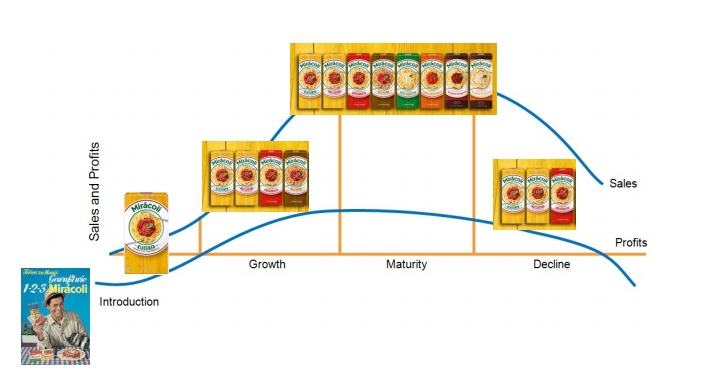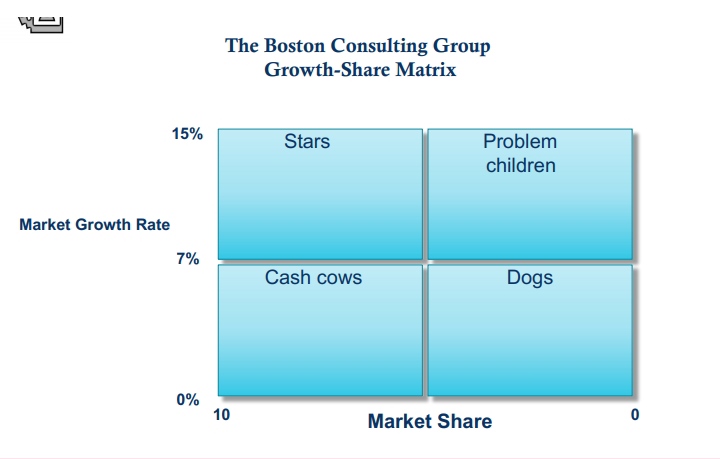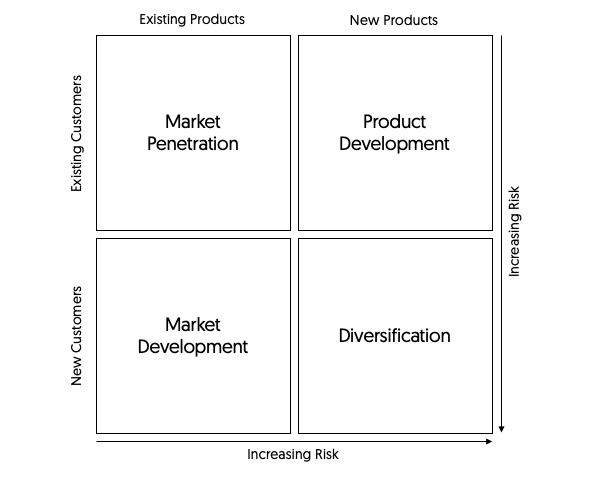Introduction
Starbucks is a coffee house company that started as a small coffee shop in the Seattle’s Place market in 1971. The small shop specialized in commercial selling of Arabica beans to small coffee markets. However, Schultz, one of the members of the small shop, agreed to purchase the company and made it well known to the public. Schultz assigned Orin Smith as the CEO of the Company in 2002 after the company flourishing in its sales and having over 5000 stores globally (Khushman 2019). Therefore, the company became dominant in providing handcrafted beverages and coffee products to its customers in North America alongside other products.
Starbucks Company had three propositions, i.e., providing high-quality coffee to its customers, offering high-quality services and enhancing customer intimacy through creating a favorable atmosphere to its customers (Honack and Waikar 2017). The case study will help determine the current marketing stage of Starbucks Company, classification of the company based on the Boston Consulting Group matrix and Ansoff product-market matrix. Nevertheless, these three components will help us in analyzing the current market situation of Starbucks company.
The importance of each stage of a product life cycle in the Starbucks case
Importance of the stages of product life cycle
The Product life cycle is an essential tool used by managers and marketers in new product development; forecasting the sales levels, a planning tool, helps estimate revenues and enhances the marketing manager’s control plans of the company (Suryawanshi 2020). Therefore, the primary four stages of new product development are the introduction stage, the growth stage, maturity, and the declining stage. These are essential stages of a product’s life that enable marketers to establish effective market strategies that will lead to the product’s success on the market. Starbucks Company will be the basis of these stages and will project the current Starbucks product life. Hence, the stages of the product life cycle are shown in the model below;

Introduction Stage
It is the first stage of the product life cycle where new products are introduced in the market, low sales volume, high promotional strategies through advertising leading to increased expenditure and low pricing to get more market share. With the introduction of the coffee product in the Company, Schultz, the company’s chairman, advertises the company to the public to create awareness of the company globally. (Da Luz et al., 2018, p.30).
Therefore, Schultz promotes only one product to the public at a high price of one dollar, which will help the company recoup the development costs. Schultz creates awareness of the company by investing $25 million in advertising the company, giving him a breakthrough in opening more outlets. The company provides trial services to the customers, attracting more customers to use their products continuously (40% of the new customers).
Growth Stage
This is the second stage of the product’s life where there is increased profitability, competition in the market, increased sales volume, and product awareness. There are reduced costs due to as a result of expanded distribution channels and economies of scale. Schultz opened up 140 stores in Chicago and North West, which sold premium coffee beverages and beans. These stores competed strongly with small-scale stores of Barnie’s Coffee and Tea. The company’s sales increased by forty percent and realized increased net earnings rose by fifty percent in 2002 (Horvat et al., 2019, p. 25). The company had a more comprehensive range of customers, almost 20 million, due to increased product awareness.
Maturity Stage
Starbucks Company increased its sales and profits without incurring any advertising costs. This is because it has already created awareness in its product life’s introduction and growth stage. The company achieved its success without spending any cent on advertising attributed to local and point sale marketing criteria. The company has a unique number of potential customers (20 million) and intensive distribution outlets (5000 stores) globally. The customers’ brand loyalty is created, leading to increased sales and revenues realized by the Company (Iyer and Church 2014). Starbucks Company introduced a variety of products, i.e., brewed coffees, espresso drinks, blended beverages, and premium teas, in addition to the provision of coffees to its customers.
Decline Stage
The last stage in the product’s life is characterized by declining sales volume, reduced production, decreased profitability, and distribution inefficiency. Consumers have changed their tastes and preferences in the products offered by Starbucks Company and hence shifted to other brands. This stimulates the company managers to inject $40 million in its 4500 stores annually. This will improve the speed of customer service and increased customer satisfaction.
Starbucks products and brands are in the Maturity stage currently, and the management’s objective is to maintain its revenues and sales and minimize costs. However, in this stage, its customers have complete knowledge of the products offered, which encourages customer satisfaction. Moreover, Starbucks offers a wide range of products apart from coffee, giving it a competitive advantage and a vast market share. The company can be involved in market and product modification, thus; improving the features and quality of their current products, winning their competitors, converting a segment of non-users, and establishing new market segments.
Classification of the Starbucks business using the Boston Consulting Group Matrix
Boston Consulting Group Matrix/ Growth-Share Matrix
It is a chart that helps organizations or businesses in analyzing their products. It enhances effective allocation of the business resources, product, and strategic management and essential in brand marketing (Ionescu 2011, p. 67). It is also used in measuring the firm’s performance and consists of four quadrants, i.e., cash cows, stars, problem children, and dogs quadrant. This matrix helps the business know where to invest by establishing its opportunities and developing its products. The Boston Group Matrix shows the relationship between the market growth and the market share of a given company. This analytical tool will help Starbucks managers know which products to invest in, discontinue, and develop products.

The dogs quadrant represents low growth products with low market share, while the star quadrant represents the high market growth and market share. Consequently, Problem children represent products of high growth markets with low market share, while the cash cows are products of high market share and low growth (Hensmans 2019). However, from the case study, it can be concluded that the Starbucks coffee business falls in the cash cows quadrant. This is because it has a significant market share of a third of all the bars in America. Hence, more than 109 million citizens of the United States are served by the Company.
Starbucks Company had a high market share of coffee consumers in America with a low market growth rate. Seemingly, the growth rate was low since eight states in America were not being operated by Starbucks. Moreover, only 150 of 300 areas were served by Starbucks Company, hence qualifying to be in the cash cows quadrant. There was a low market growth rate in the South East, where only one store served almost 110,000 people. Starbucks coffee company had occupied a broad customer base worldwide, with many stores in Thailand, Asia, Australia, the U.K., Europe, Africa, and the Middle East, among other nations.
There was an increased market growth in the United States among the coffee drinkers in restaurants and offices. This attributed to 38% in 2000, 42% in 2002, and 50% growth rate in 2005. According to Van Hijfte (2020), Starbucks Company realized a high turnover in coffee products, which helped gain a higher market share globally. The company invests in a slow-growing industry and hence uses the cash generated in other units.
Starbucks Company maximizes its energy by increasing its sales and revenues using its coffee products to finance other business units. The marketing managers of the company use trials and sample techniques to improve their targeted customer base. The company uses the profits to introduce other products, e.g., ice creams, premium teas, salads, and sandwiches. However, in this quadrant, Starbucks Company can fund other product lines like equipment and accessories and its research and development programs. Cash flow generated by the company in this quadrant is used in the investment of problem children and the stars quadrants.
The Ansoff Product Market Expansion Grid and activities that Starbucks must undertake
Ansoff Product-Market Expansion Grid
Ansoff Matrix is a Product Market expansion grid that enables a firm to plan its product growth strategies. The matrix uses four major product growth strategies that a firm can use to analyze its growth with its associated risks (Loredana 2017, p.145). Therefore, Starbucks Company should adopt these product growth strategies for its success and gain a competitive advantage (Yu 2019). The four significant strategies are Market penetration, Product development, Market Development, and diversification of new products. These strategies are summarized in the Ansoff matrix as shown below;

Market Penetration or Expansion
In this product growth strategy, the firm aims at increasing and expanding the market share using its existing products. Therefore, for increased growth, Starbucks Company should invest more in promotion through its robust advertising. It follows the fact that it had achieved in the previous years without spending any cent on advertising. The company should reduce the cost of coffee to less than one dollar for a single paper cup to attract more customers and dominates a greater proportion of the market (Alkasim et al., 2018, p.193). Starbucks Company should discourage competitors by buying the available competitors like California Peets Coffee and Minneapolis coffee. This will help the company in winning the customers of its competitors. It should open up to 10,000 stores in North America and convert the coffee to non-users.
Product Development
It is where the firm uses innovative methods to develop its products in the existing market. It is applicable where the firm fully understands its market and able to fulfill the requirements of existing customers. Starbucks Company launched new hot beverages in every holiday and developed these products through research techniques. The company should expand on the wireless internet connection in its stores, attracting more customers, hence increasing its sales (Azriuddin et al. 2020, p.36). Starbucks Company should merge with its coffee competitors in U.K., Thailand, Asia, and Europe to form a strong strategic partnership that will increase its revenues.
Market Development
This strategy enables the firm to enter new markets with its existing products. The firm aims at expanding its geographical territories and new segments. Thus, Starbucks Company has a plan to expand its business and open stores in new markets. However, the company believes that it would lead to increased sales and revenues. The company’s plan of extending its stores internationally should be fulfilled by opening new stores within sixteen weeks.
Diversification
This is a product growth strategy that aims at promoting a new product in a new market; thus, a risky plan to be adapted but associated with increased revenues. Starbucks Company introduces coffee-related products to other new markets, i.e., brewed coffees, espresso drinks, premium teas, and cold blended beverages. The company distributed music C.D.s, novels, games, and almost 500 stores traded in salads and sandwiches. This diversification strategy ensures that the company enters newer market segments, thus increasing its revenue, market share and leads to increased company growth. This strategy helps the company to emerge as the most respected coffee brand globally.
Conclusion
Starbucks coffee house company, being the most respected and recognized coffee brand globally, develops its products from the introduction stage to the maturity stage, where it invests 40 million dollars in its 4500 stores. The company has a wider market share in North America and other regions globally, increasing its sales and product growth. However, it also invests in research, development, and innovation to satisfy the new market segments. The company has a large market share with low market growth worldwide due to unattended market segments in the southeast regions, thus classified as a cash cow in the Boston Group Matrix. Nevertheless, Starbucks Company established product growth strategies that incorporated new products (hot beverage coffee), investing in advertising and distribution outlets. Innovation of new products in new market segments, partnering with other international coffee companies, and diversification of its product line maximized its customer’s tastes and preferences. These strategies would positively influence the success of the company and increase its overall turnover and reputation.
Bibliography
Azriuddin, M., Kee, D.M.H., Hafizzudin, M., Fitri, M., Zakwan, M.A., AlSanousi, D., Kelpia, A. and Kurniawan, O., 2020. Becoming an International Brand: A Case Study of Starbucks. Journal of the community development in Asia, 3(1), pp.33-43.
Alkasim, S.B., Abdullah, H.H., Bohari, A.M., Abdullah, S.S. and Sallehddin, M.R., 2018. The mediating effect of cost leadership on the relationship between market penetration, market development, and firm performance. Journal of Business & Retail Management Research, 12(03), pp.190-200. Web.
Da Luz, L.M., de Francisco, A.C., Piekarski, C.M. and Salvador, R., 2018. Integrating life cycle assessment in the product development process: A methodological approach. Journal of Cleaner Production, 193, pp.28-42. Web.
Horvat, A., Granato, G., Fogliano, V. and Luning, P.A., 2019. Understanding consumer data use in new product development and the product life cycle in European food firms–An empirical study. Food Quality and Preference, 76, pp.20-32. Web.
Honack, R. and Waikar, S., 2017. Growing big while staying small: Starbucks harvests international growth. Kellogg School of Management Cases. Web.
Hensmans, M., 2019. A new matrix for building platform portfolios: how companies can sustain their leadership. Journal of Business Strategy. Web.
Iyer, V. and Church, N., 2014. The Linking Process: Product Life Cycle, Diffusion Process, Competitive Market structures and Nature of the Market. Repositorio de la Red Internacional de Investigadores en Competitividad, 8(1).
Ionescu, F.T., 2011. Boston consulting group II–a business portfolio analysis matrix. International Journal of Economic Practices and Theories, 1(2), pp. 65-70.
Khushman, A., 2019. An Evaluation of Entrepreneurial Activities and Growth Strategies–The Case of Starbucks Coffee House. Web.
Loredana, E.M., 2017. The use of Ansoff matrix in the field of business. Annals-Economy Series, 2, pp.141-149.
Suryawanshi, V.B., 2020. Product Life Cycle (PLC)-Principles of Marketing.
Van Hijfte, S., 2020. Company Strategy. In Make Your Organization a Center of Innovation (pp. 15-37). Apress, Berkeley, CA.
Yu, V.D., 2019. The analysis of methods for developing the marketing strategies.
